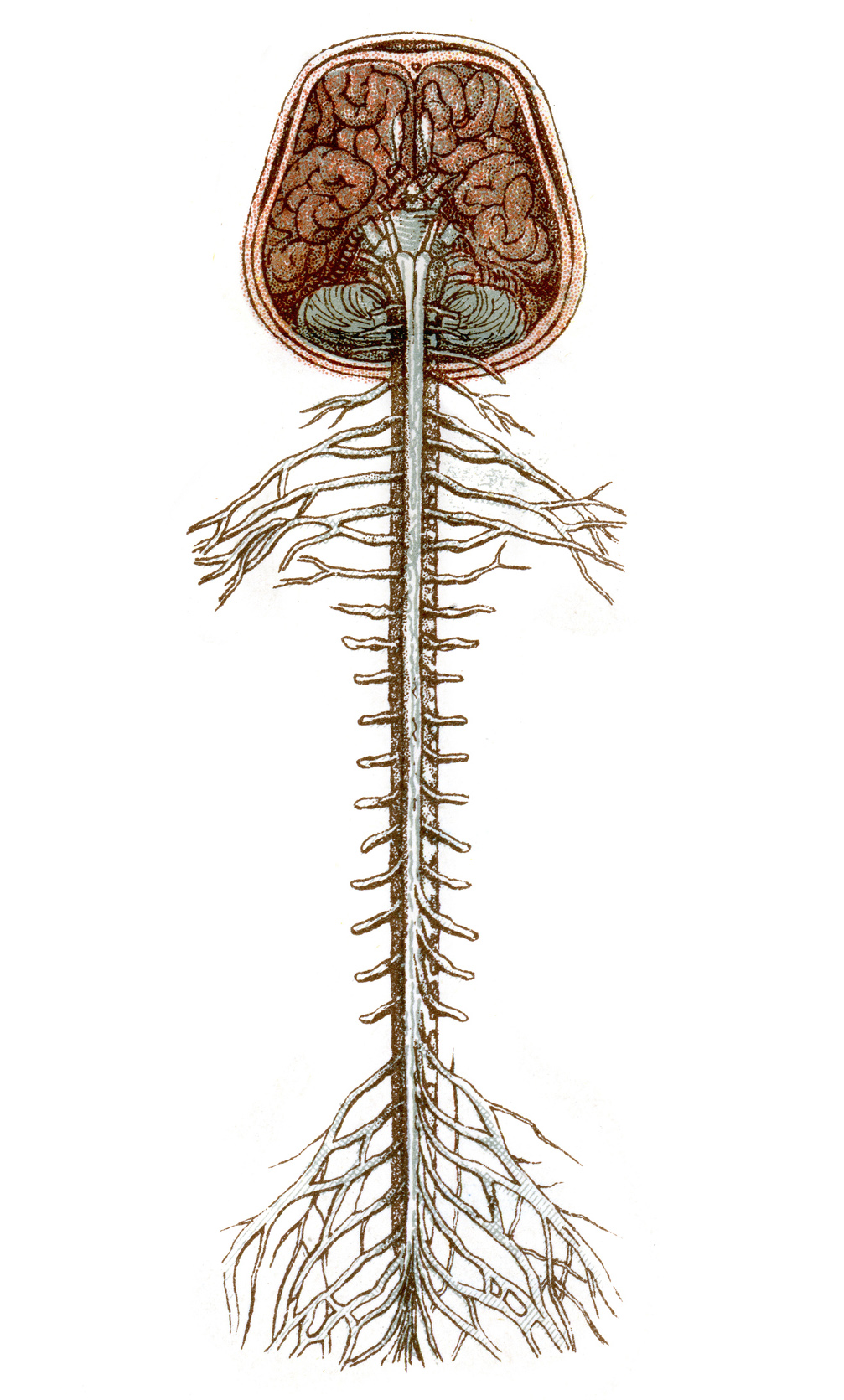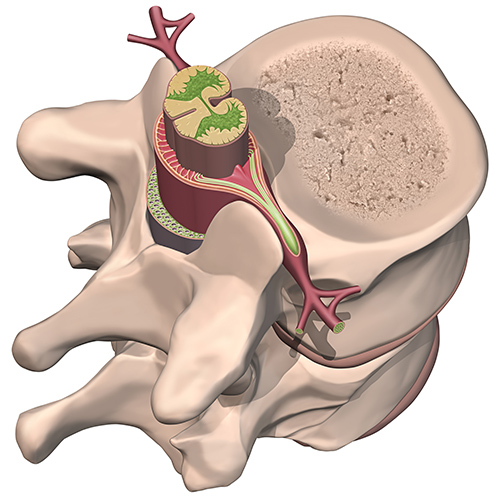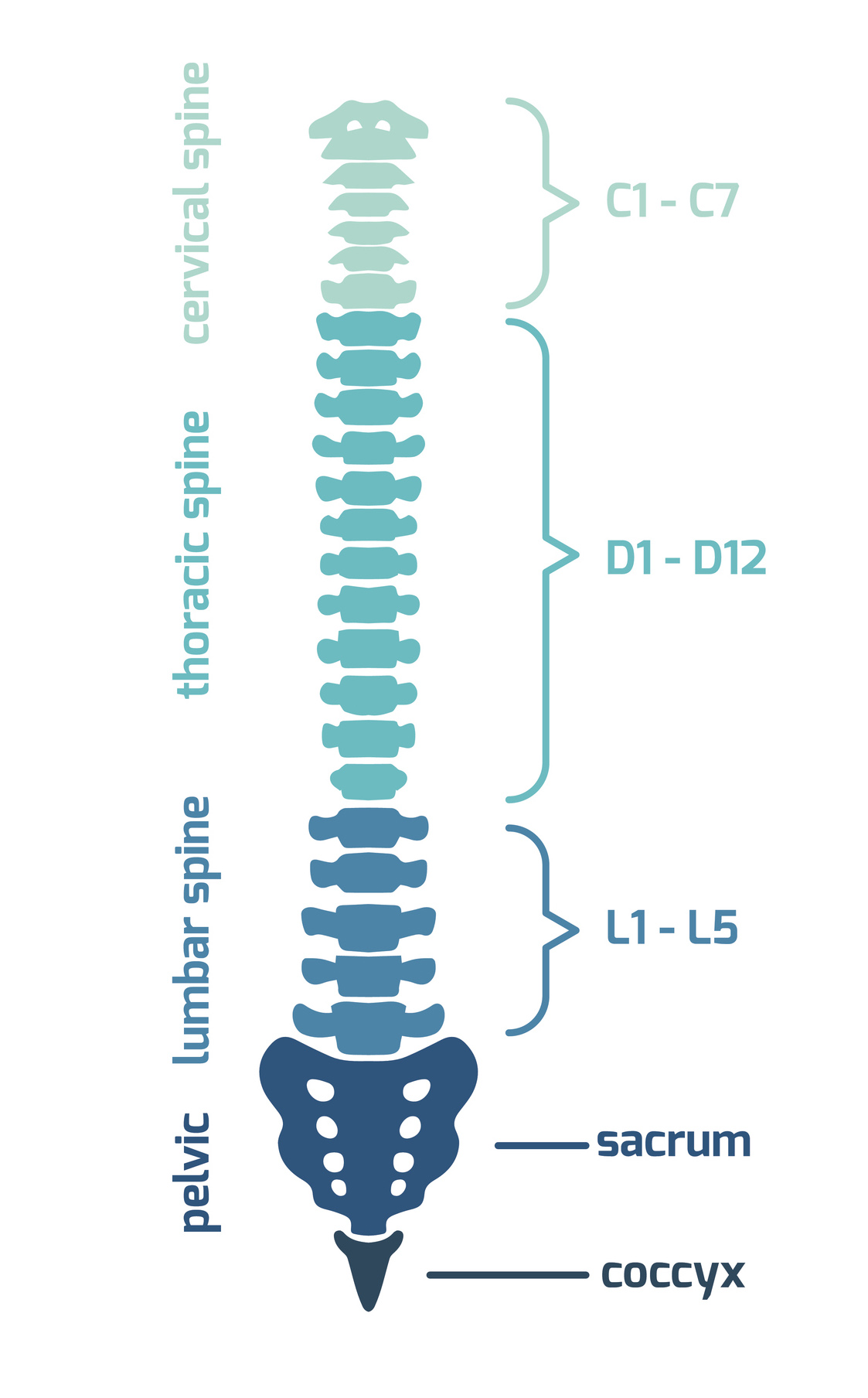The spinal cord
 The spinal cord is part of the central nervous system and consists of a tightly packed column of nerve tissue that extends downwards from the brainstem through the central column of the spine.
The spinal cord is part of the central nervous system and consists of a tightly packed column of nerve tissue that extends downwards from the brainstem through the central column of the spine.
Even though it is a relatively small bundle of tissue, weighing a mere 35g and just about 1cm in diameter, the spinal cord plays a crucial role in facilitating our daily activities. It carries nerve signals from the brain to other parts of the body, commanding the muscles we use to move. It also receives sensory input from the body, partially processes it, and transmits that information to the brain.
As well as carrying motor and sensory signals between the brain and periphery, the spinal cord provides separate neural circuits for many of our reflexes - automatic, involuntary responses to sensory inputs. Some reflexes, such as the knee-jerk and the withdrawal reflex (for example, when touching something hot), are built into the nervous system and bypass the brain, while others can be learned over time.
Structure of the spinal cord
 Externally, the spinal cord is protected by 26 bones called vertebrae, which are sandwiched between cartilage disks to cushion the cord from any jarring caused by bodily movement. Just like the brain itself, the spinal cord is also protected by three layers of meninges (membranes).
Externally, the spinal cord is protected by 26 bones called vertebrae, which are sandwiched between cartilage disks to cushion the cord from any jarring caused by bodily movement. Just like the brain itself, the spinal cord is also protected by three layers of meninges (membranes).
Inside, the spinal cord consists of grey matter and white matter. If you look at a cross-section, the grey matter takes on the shape of a butterfly, with four 'wings' called horns. The horns in the front contain motor neurons, which carry information from the brain and spinal cord to the body’s muscles, stimulating their movement. The horns in the back contain sensory neurons which carry sensory information – about, for example, touch, pressure or pain – from the body back to the spinal cord and the brain.
The spinal cord grey matter is enveloped in a column of white matter, which contains axons that allow different parts of the spinal cord to communicate smoothly. These axons travel in both directions - some carry signals from the body to the brain, while others deliver signals from the brain to neurons located elsewhere in the body.
Spinal nerves
Two rows of spinal nerves - bundles of axons - emerge on either side of the cord through the bony ridges of the vertebrae. There are 31 pairs of these nerves, each representing a segment of the spinal cord which is further divided into five regions. From top to bottom, these are:
- 8 cervical (neck)
- 12 thoracic (chest)
- 5 lumbar (abdominal)
- 5 sacral (pelvic)
- 1 coccygeal (tailbone) segment

Images from iStockphoto
